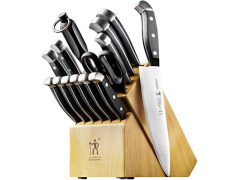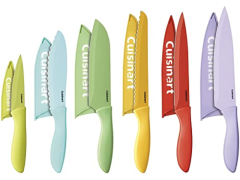We independently evaluate the products we review. When you buy via links on our site, we may receive compensation. Read more about how we vet products and deals.
It's that fresh-start time of year: Here's how to clean your refrigerator properly, according to experts
A new year means deep cleaning, and we have expert tips on how to clean your fridge without spoiling any of your food.
The beginning of a new year is a great time to take stock of your space and give it a deep clean. From your bedroom to your bathroom to your kitchen, every spot appreciates a glow-up, and you'll enjoy the refresh so much sooner than if you wait for (or procrastinate until) spring cleaning.
Palmolive Ultra Dishwashing Liquid Dish Soap
Scotch-Brite Heavy Duty Scrub Sponges
Homexcel Microfiber Cleaning Cloth, 12-Pack
JohnBee Empty Spray Bottles, 2 Pack
ARM & HAMMER Baking Soda
Weiman Stainless Steel Cleaner and Polish Spray
VacLife Portable Air Compressor
Suuson Car Phone Mount
DBPower Portable Car Jump Starter
Hotor Car Trash Can
EcoNour Windshield Cover, 2-Pack
Inse Cordless Stick Vacuum
ThisWorx Car Vacuum
Mamnv Robot Vacuum and Mop
Bissell Little Green Original ProHeat Machine
OKP Life K2 Robot Vacuum
Shark Rocket Ultra-Light Bagless Vacuum
Lefant Robot Vacuum
Henckels Knife Set, 15-Piece
Cuisinart 12-Piece Kitchen Knife Set
Brita Insulated Filtered Water Bottle with Straw, 26-Ounce
Kitchen Mama Electric Can Opener
Kitchellence 3-Stage Knife Sharpener
FineDine 24-Piece Glass Storage Containers with Lids
Crock-Pot Electric Lunch Box
Fab Totes Clothes Storage Bags, 6-Pack
Hopopro Shower Head
Wind Talk Space Heater
Cozsinoor Bed Pillows, 2-Pack
American Soft Linen 6-Piece Luxury Towel Set
Cozsinoor Cooling Bed Pillows, Queen, 2-Pack
StorageRight Clothes Storage Bins, 3-Pack
Kismile Small Electric Space Heater
Bedsure Fleece Throw Blanket
One element in your home that's easy to overlook is the refrigerator. But when you think about the fact that it holds all your food and perishables, don't you want it to be one of the cleanest places in your home?
NSF International, an independent public health organization, conducted a study on household germs, testing 30 common items in 22 different households. They report that "the biggest misconception identified through the study was that the bathroom is the dirtiest place in the house, when in fact the kitchen had the most germs."
Germs can grow in moist and warm environments. According to the study, items like "sponges and coffee reservoirs, which may not be cleaned as frequently as they should be, were among the top 10 germiest places in the home." Refrigerator handles — a high-touch spot — are another spot where several types of germs and bacteria showed up.
How to clean a refrigerator, step by step
According to CNET, you should clean your fridge about once a quarter. Instead of frantically searching for "how to clean fridge" when you run into a problem, like a power outage, start here and get ahead of it. Luckily, it's relatively simple.
Step 1: To begin, the CDC suggests completely emptying your refrigerator of all food items as well as removable drawers and shelves. (They point out that foods that need to refrigerating shouldn't be out for more than two hours, but you'll be done way sooner than that.) The Maids, a leading residential cleaning services company, suggest checking all expiration dates and tossing any expired or questionable items.
Step 2: Allow any glass components (like shelves) to come to room temperature (running hot water over cold glass could cause it to break). Then wash all of shelving and drawers with hot soapy water and dry each piece with a clean towel. The Home Depot explains that you can wash these components as you would hand-wash dishes — with a fragrance-free dish soap and a sponge.
This fragrance-free soap from Palmolive is made with 100% biodegradable ingredients and is also hypoallergenic.
Use the soft side on glass and the scrubber side to remove stains and stuck-on gunk.
Replace your old rags with this pack of a dozen microfiber clothes. Bonus — they are also lint- and scratch-free.
Step 3: Next, wipe down the inside of the refrigerator with hot soapy water. Rinse away residue, lingering crumbs and leftover soap with clean water. Be sure to wipe down all walls and sides — you want to get into every nook and cranny.
Step 4: If you want to go that extra mile after you've finished cleaning with soap, the CDC says you can sanitize with a solution of 1 tablespoon of liquid bleach in 1 gallon of water. If you'd prefer to stay away from harsh chemicals, The Home Depot says to fill a spray bottle with a cleaning solution made with two tablespoons of baking soda in a quart of hot water. For another alternative, The Maids recommend using hydrogen peroxide: "Hydrogen peroxide is a safe and natural alternative to bleach for disinfecting, and it’s an effective antibacterial and mold killer. Pour a bottle of hydrogen peroxide into a spray bottle and spray down the inside. Let the peroxide do its job for about 10 minutes, then wipe it off with a damp cloth."
Want to mix your own cleaning solutions? These spray bottles, sold in pairs, with adjustable nozzles, make it easy.
Baking soda is great at deodorizing the fridge, as you probably know. But it can also be mixed into a cleaning paste, with a little water.
How to clean the outside of a refrigerator
Once everything is clean, the USDA suggests leaving the refrigerator door open for about 15 minutes to allow free air circulation." Then you can put back shelves and drawers and reload food products. Clean the outside of the fridge with (you guessed it) hot soapy water — unless it's stainless steel. In that case, use use a stainless steel cleaner that also buffs away fingerprints. Don't forget to wipe down those fridge handles — the Spruce recommends using a gentle towel that won't scratch.
This easy-to-use spray will polish stainless steel appliances without leaving any streaks. It easily takes care of fingerprints and smudges.
If your refrigerator has a water dispenser, The Maids suggest you remove the tray, then clean and disinfect it . You should also replace your dispenser's filter.
After that, wash your hands, toss the towels you used into the laundry and you're all set.
Stock up on the supplies above, and get that fridge makeover done before the end of the month. If you have Amazon Prime, you’ll get free shipping, of course. Not yet a member? No problem. You can sign up for your free 30-day trial here. (And by the way, those without Prime still get free shipping on orders of $25 or more.)
Looking for more great Amazon home deals? Check these out:
Auto
VacLife Portable Air Compressor
Suuson Car Phone Mount
DBPower Portable Car Jump Starter
Hotor Car Trash Can
EcoNour Windshield Cover, 2-Pack
Vacuums
Inse Cordless Stick Vacuum
ThisWorx Car Vacuum
Mamnv Robot Vacuum and Mop
Bissell Little Green Original ProHeat Machine
OKP Life K2 Robot Vacuum
Shark Rocket Ultra-Light Bagless Vacuum
Lefant Robot Vacuum
Kitchen
Henckels Knife Set, 15-Piece
Cuisinart 12-Piece Kitchen Knife Set
Brita Insulated Filtered Water Bottle with Straw, 26-Ounce
Kitchen Mama Electric Can Opener
Kitchellence 3-Stage Knife Sharpener
FineDine 24-Piece Glass Storage Containers with Lids
Crock-Pot Electric Lunch Box
Home
Fab Totes Clothes Storage Bags, 6-Pack
Hopopro Shower Head
Wind Talk Space Heater
Cozsinoor Bed Pillows, 2-Pack
American Soft Linen 6-Piece Luxury Towel Set
Cozsinoor Cooling Bed Pillows, Queen, 2-Pack
StorageRight Clothes Storage Bins, 3-Pack
Kismile Small Electric Space Heater
Bedsure Fleece Throw Blanket












